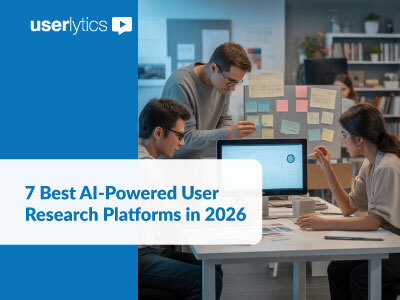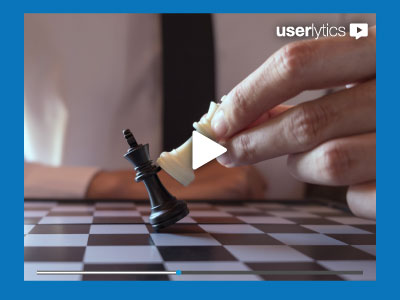Did you know that 40-60% of users who sign up for a free trial of a software or SaaS application will use it once and never come back?

If your customers don’t return to use your software, then they won’t sign up for your paid plan and you won’t be generating any revenue for your business.
Not good.
The challenge for SaaS companies with some type of free trial or “freemium” model is to keep them using the application for long enough such that the customer lifetime value of the customers who sign up for the paid version exceeds the aggregate acquisition cost of both free and paying customers.

That means a SaaS business needs to not only be constantly “selling” through new customer acquisition, but crucially, converting as many free-trial customers as possible to paid plans, and then keeping these paying customers for as long as possible to maximize their lifetime value.
Getting your customers to keep engaging with the application early on in the process is the key to converting free customers to paying customers, as well as maximizing customer retention and thus customer lifetime value.
To do so, you need to design an effective onboarding strategy to educate your customers so they learn how to use your product to create value, successful outcomes and thus repetitive usage.
14 User Experience Strategies For Effective Customer Onboarding
Here are 14 user experience strategies for improving your user onboarding process so you can turn more free trial users into paid customers, and get more paid customers to stick around:
1. Define What “Onboarded” Looks Like
Before you design the user journey, you need to get clear on the desired outcome. What would your users consider to be successful outcomes?
In a 30-day free trial period typical for most software services, you can’t expect users to master every single feature.
Instead of throwing everything and the kitchen sink at your customers, define what meaningful results you can help them achieve that will help them experience success with your product. Then design your onboarding process to focus on that journey and optimize the free-trial period.

2. Get Them “Hooked At First Sight”
Remember that only 40% of SaaS customers log in the second time?
Leverage the moment of excitement when users first sign up to make them stick around and experience your product with some hands-on tasks that show them the value and ease-of-use of the software.

3. Identify “Red Flag” Behaviors
Do you know where your customers drop off during the onboarding process? Analyzing your churn data can help you understand where issues occur so you can “plug the holes” to maximize results.
Also look for “red flag” metrics — e.g. if customers tend to spend more time than average on a task, it may indicate that they’re stuck or unable to progress. You can then focus your efforts on improving the user experience in these steps to improve retention rate (e.g. breaking a task down into smaller steps or adding an instructional video.)
4. Unclog Your Onboarding Process
You can glean insights on where customers are most likely to drop off during the onboarding process by looking at your funnel analytics.
Focus on these sections of the onboarding journey, and conduct user testing to get both qualitative and quantitative feedback so you can uncover the why behind the what that your funnel analytics uncovers.
5. Fast Track the “Aha” Moment
Identify the “tipping point” at which using your product becomes a habit for your customers. What’s the series of actions they need to take to get there?
Analyze your retention metrics to identify these “aha” moments and the shortest path to get there. Make this the focus of your onboarding user experience to ensure that customers are taking these “core” actions as quickly as possible.
For instance, Twitter found out that once users have followed 30 people, they’re pretty much active forever. Their onboarding strategy, not surprisingly, focuses on getting new users to follow 30 people as quickly as possible by offering suggestions and encouraging them to import their contact.

6. Showcase Product’s Capability
Although it’s important for customers to experience success with your software by focusing on a narrow set of outcomes in a short period of time, these tasks may only represent a small subset of your product’s features.
Your customer onboarding process should include content to demonstrate the full range of your product’s capabilities so customers will get excited, and be able to make an informed purchasing decision.
Create simple demo videos or a product tour for this purpose, with the intention of inspiring your customers to stay on and take full advantage of what the software has to offer without making them feel overwhelmed.
You can also use this as an opportunity to set user expectation, e.g. what your product can and cannot do, to help improve customer satisfaction and retention in the long run.
7. Add Value To the Experience
To build trust and relationships with your customers, the user experience of your onboarding process needs to go beyond technical how-to’s.
Consider offering valuable information to help customers get the most out of your product, and introduce this repository of resources to your new customers during the onboarding process.

8. Prioritize Customer Support and Satisfaction
Happy customers tend to stick around longer and tell their friends about your product so make sure you design the onboarding user experience with their satisfaction in mind.
To that end, implement a comprehensive customer support system to make it easy for users to get the assistance they need, e.g. including live chat on your website, offering an easy-to-use FAQ or knowledge base.
As more customers are expecting support whenever and wherever they need it, you should also create an omnichannel customer care experience to help improve customer satisfaction.
Don’t forget to analyze your customer support requests so you can fix the causes of the questions or complaints — e.g. hidden features, insufficient instruction, confusing user interface.
9. Distribute Relevant Content
Sharing valuable content is great, but sharing content relevant to the user’s progress in your onboarding sequence is even better. It’ll help you increase engagement, usage, and customer retention.
With a little bit of help from technology, you can segment your list and track your customers’ interaction with your software so you can send them content that maps to their progress and success milestones.
You can deliver such content via lifecycle emails, in-app messaging or even personal emails and phone calls.
10. Create a Coherent Brand Experience
Consistency builds trust, and trust is critical in customer retention.
Your onboarding process should align with the overall brand experience so the transition from the welcome sequence to regular communications is as seamless as possible.
You just spent a lot of effort in cultivating a relationship with your new customers…don’t break that trust the moment they sign on to your paid plan!
11. Increase Engagement With Hands-On Tasks
Users like to feel that they’re actively involved and in control of their experience when using your software.
Your onboarding process can take them through a series of interactive, hands-on “assignments” so they can learn to use the various tools and features in your product without having to read through a ton of instructional text (hint: they won’t.).
These hands-on experiences can be very effective in engaging users to get them make using your product a habit.

12. Keep Content Format and User Interface Simple
More often than not, the best software products are intuitive and easy-to-use. If that describes you, congratulations!
Don’t ruin a good thing by loading your onboarding materials with excessive content or videos. Take Dropbox as an example: their onboarding material consists of a 4-page PDF. Its simplicity helps users get up and running in no time.

13. Simplify Transition to Paid Plans
If you want to be profitable, you need as the % of your free-trial customers that sign up for your paid plans, and their lifetime value, to exceed the acquisition cost of both your free and paid customers in aggregate.
Review the user path that takes customers from signing up for a free-trial to joining a paid plan and make it as frictionless as possible. If there’s one particular step at which customers tend to drop off, you may want to focus on improving the user experience of that piece.
For many SaaS products, a clear feature and pricing comparison chart will help customers make their purchasing decision.

14. Continue the Conversation
Customer retention is an ongoing process. After customers are “onboarded” and signed up to your paid plans, you need to continue building trust and relationships with them.
Not only will they be more likely to stick around but you’ll also cultivate loyalty that leads to word-of-mouth and referral.
There are a few ways to do so:
- Use retention hooks — features that will make customers keep coming back.
- Keep customers in the loop by sharing new feature developments and make them feel like they’re getting their money’s worth.
- Continue to add value by offering customer-only events, training, and content.

Don’t Forget To Test!
Every software and every audience is different. After you have made improvements to your user onboarding process, don’t forget to conduct user testing to iron out the kinks and make sure the user experience is helping you achieve the desired results.
Originally published on June 27, 2017




